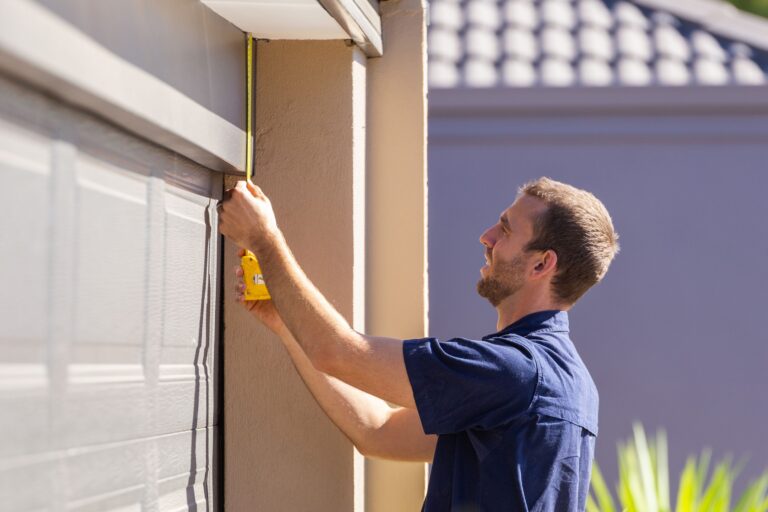
Have you ever noticed a draft or a puddle in your garage after a storm? It might be time to replace the weather stripping on your garage door. Fresh weather stripping seals out drafts and moisture, helping to keep your garage warm and dry. It also helps insulate your space, which can lower your heating bills. Let’s explore how professional garage door services in Denver CO can help update your weather stripping and keep your garage in great shape.
Garage Door Services in Denver CO Understand Weather Stripping
Weatherstripping is material that seals the edges of your garage door to close gaps. Over time, this barrier can break down because of weather and use. If you see cracks or gaps in your weather stripping, it’s time to replace it. New weather stripping will help keep your garage protected from weather, pests, and dirt. By keeping these elements out, you also help maintain the items stored in your garage in better condition.
Signs You Need Replacement
To see if you need new weather stripping, close your garage door during the day and check for light coming through any edges. If you see light, that means gaps are letting air in and out, which is not good. This can make your garage colder in winter and hotter in summer, increasing your energy bills because your heating and cooling system has to work harder. Check your energy bills, too; a sudden increase might mean it’s time for new weather stripping.
Select the Right Material
Choosing the right material for your weather stripping is very important. You can choose from rubber, vinyl, and silicone. Each material has its benefits. Rubber is very strong and flexible, making it a common choice. Silicone is best for places with very hot summers and cold winters because it doesn’t break down easily. Vinyl is cheaper than silicone and works well in many situations. Think about your local weather when picking your material.
Prepare Your Garage Door
Before putting on new weather stripping, ensure your garage door area is clean. Remove the old weather stripping and clean the door’s edges so there is no dirt or grease. This helps the new weather stripping stick better and ensures no leaks. A clean start means a better fit and more protection for your garage. Cleaning well also prevents future problems. Dirt can stop the new weather stripping from sticking well, so a thorough clean-up is key.
Measuring and Cutting to Fit
Measure the door to see how much weather stripping you need. Always cut a little more than you think you will need. It’s easier to cut off extra than to add more if you cut too short. Being precise here means you won’t waste materials and get the best seal possible. If you cut too short, you might leave gaps, letting drafts into your garage. Make sure you measure twice so your cut is right the first time.
Installing the Top and Side Strips
First, attach the new strips at the top of the door, then do the sides. If your weather stripping has an adhesive back, peel off the cover and press it firmly in place. If it needs nails or screws, space them out evenly and make sure they’re tight. This helps your weather stripping stay put and do its job no matter the weather. Proper installation with help from garage door services in Denver CO ensures that the strips won’t come loose quickly, offering long-term protection against the elements.
Attaching the Bottom Seal
The bottom strip of your garage door might need a special track or retainer for installation. Put the new seal into the track and secure it well. Ensure it touches the ground evenly when the door is closed. This helps keep out water, dirt, and small animals. A good bottom seal is essential for full protection. Ensuring a snug fit along the bottom prevents small critters or water from sneaking in under the door.
Checking for Gaps
Once everything is installed, check again for any light coming through the door. Make any needed adjustments to the strips to close gaps. A well-sealed garage door saves energy by keeping the inside temperature more stable. It also keeps out things that shouldn’t be in your garage. This step is critical—take your time to look at each edge and the bottom, and make sure there’s no light and no drafts. According to Energy Star, properly installed weather stripping can reduce energy costs by up to 15-20% for the average homeowner by sealing leaks and reducing drafts that impact heating and cooling systems.
Regular Maintenance Tips
Keep your weather stripping clean and check it often for signs of wear. Fix small problems before they get bigger. This way, you can make your weather stripping last longer. Regular care keeps your garage safer and more comfortable. Also, after cleaning, always dry the strips thoroughly to prevent moisture from damaging them or the door, ensuring they function effectively for as long as possible.
When to Consult a Professional
If you’re unsure what material to use or how to install it, it’s a good idea to call garage door services in Denver CO. They can check your garage door and make sure the right product is used and installed correctly. This means your garage will be well-protected from the weather and other outdoor elements. Getting expert advice can save you time and ensure your garage is sealed effectively against various environmental factors.
Conclusion
Keeping your garage door weather stripping in good condition is a smart way to improve your home. Whether you do it yourself or hire garage door services in Denver CO, a good installation makes your garage safer and more energy-efficient. Don’t wait until you have a problem. Check your weather stripping today and replace it if necessary. Taking action now can prevent issues like water damage and high energy costs later, keeping your garage and home in good condition.